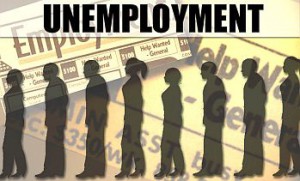 Indiana’s unemployment rate stands at 3.3 percent for January and remains lower than the national rate of 4.1 percent. With the exception of one month when it was equal (October 2014), Indiana’s unemployment rate now has been below the U.S. rate for more than four years. The monthly unemployment rate is a U.S. Bureau of Labor Statistics (BLS) indicator that reflects the number of unemployed people seeking employment within the prior four weeks as a percentage of the labor force.
Indiana’s unemployment rate stands at 3.3 percent for January and remains lower than the national rate of 4.1 percent. With the exception of one month when it was equal (October 2014), Indiana’s unemployment rate now has been below the U.S. rate for more than four years. The monthly unemployment rate is a U.S. Bureau of Labor Statistics (BLS) indicator that reflects the number of unemployed people seeking employment within the prior four weeks as a percentage of the labor force.
Looking at Marshall County you will see the January 2018 unemployment rate of 3.3 ranking up 62nd of the 92 counties. This rate is an increase from the 2.7 rate in December and the 3.0 in November.
Taking a look at the counties surrounding Marshall you will find Starke County who remained 8th on the list of counties although their unemployment rate increased to 5.1 in January after being steady at 4.1 since October.
Fulton County’s unemployment rate also saw an increase after being steady at a 3.1 or 3.2 the rate for January was 4.0.
Pulaski County had a rate of 3.3 in November and 3.1 in December. Their January rate was 3.7 ranking them 45th of the counties in the state.
St. Joseph County is 51st on the list with a rate of 3.6 only a slight increase from the 3.3 in December.
Elkhart and Kosciusko Counties continue to hover at the bottom of the list of counties with some of the lowest unemployment rates. Kosciusko County is 88th on the list with a rate of 2.7 and Elkhart County is 91st with a rate of 2.4.
Indiana’s labor force had a net decrease of 7,294 over the previous month. This was a result of 4,105 unemployed residents no longer seeking employment within the past four weeks, and a 3,189 decrease in residents employed. Indiana’s total labor force, which includes both Hoosiers employed and those seeking employment, stands at 3.31 million, and the state’s 63.7 percent labor force participation rate remains above the national rate of 62.7 percent.
In addition, Indiana’s initial unemployment insurance claims continue to be at historical lows.













